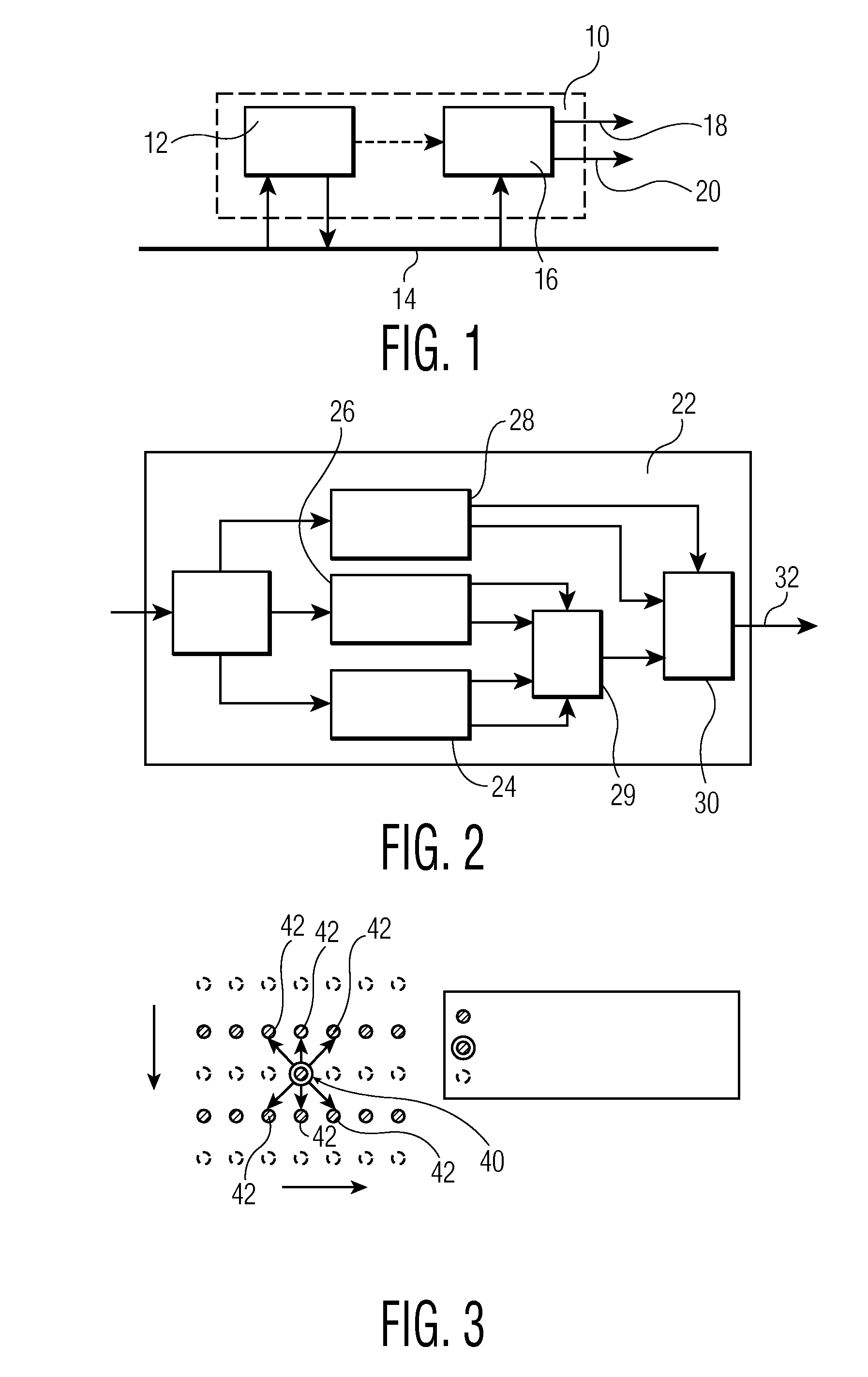Spatial and temporal de-interlacing with error criterion
a spatial deinterlacing and error criterion technology, applied in the field of spatial and temporal deinterlacing with error criterion, can solve the problems of insufficient quality level for the near future of video and digital video demands, no means to calculate the reliability of a directional interpolation, and relatively high memory requirements for spatial deinterlacers
- Summary
- Abstract
- Description
- Claims
- Application Information
AI Technical Summary
Benefits of technology
Problems solved by technology
Method used
Image
Examples
Embodiment Construction
[0025]A Memory-Based Video Processor (MBVP) is considered a successor of the Memory Based Scaler (MBS). As the name suggests, the MBVP can interface via memory, although direct streaming is a possibility also. An exemplary Video pipe 10 that incorporates an exemplary MBVP device 12 is shown in FIG. 1. The MBVP device 12 interfaces a memory bus 14 and provides an input to a CPIPE (composition pipe) 16. A CPIPE 16 processes the inputs and processes the outputs(s) 18, 20.
[0026]An exemplary MBVP device 12 comprises various components of which a de-interlacer is one. An exemplary de-interlacer block diagram 22 is shown in FIG. 2. The MBVP de-interlacer 22 comprises a spatial de-interlacer, a temporal de-interlacer 26, a film / still detector 28 and some mixers 29, 30.
[0027]The first mixer 29 basically mixes the output of the temporal de-interlacer 26 and the spatial de-interlacer (EDDI+) 24 on a pixel basis. In order to do so, error criterions are used. These error criterions form a measur...
PUM
 Login to View More
Login to View More Abstract
Description
Claims
Application Information
 Login to View More
Login to View More - R&D
- Intellectual Property
- Life Sciences
- Materials
- Tech Scout
- Unparalleled Data Quality
- Higher Quality Content
- 60% Fewer Hallucinations
Browse by: Latest US Patents, China's latest patents, Technical Efficacy Thesaurus, Application Domain, Technology Topic, Popular Technical Reports.
© 2025 PatSnap. All rights reserved.Legal|Privacy policy|Modern Slavery Act Transparency Statement|Sitemap|About US| Contact US: help@patsnap.com



